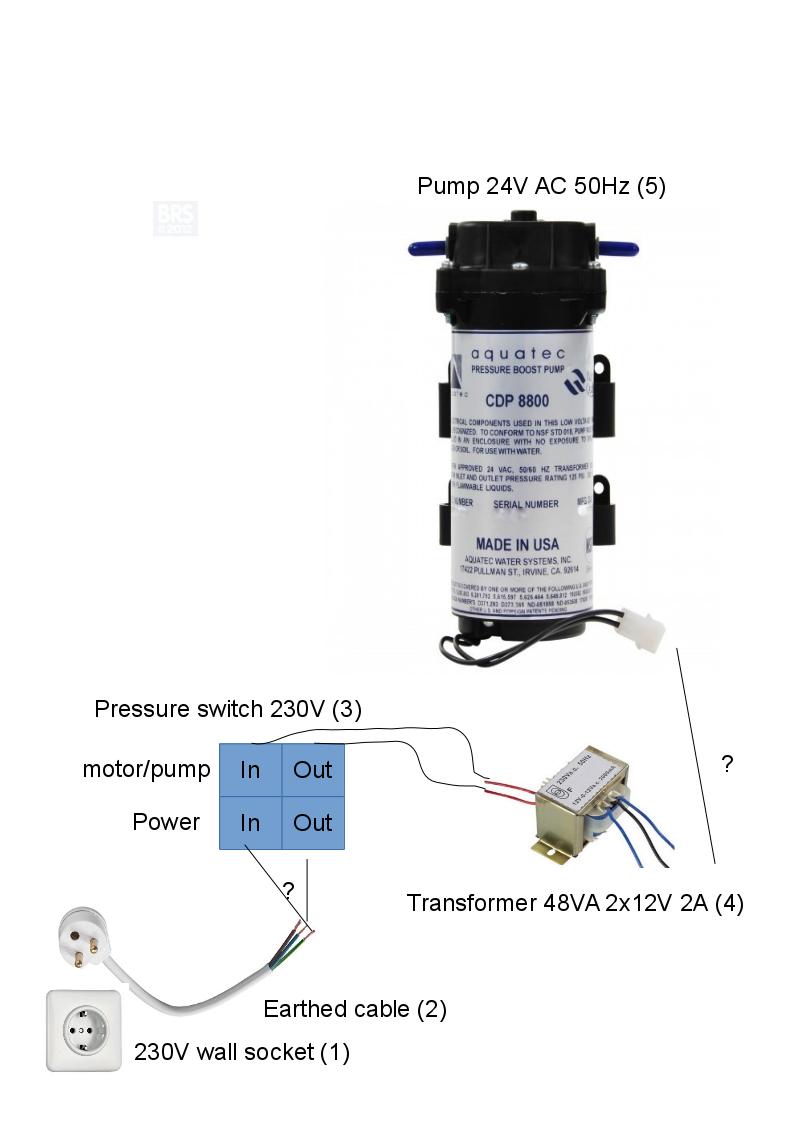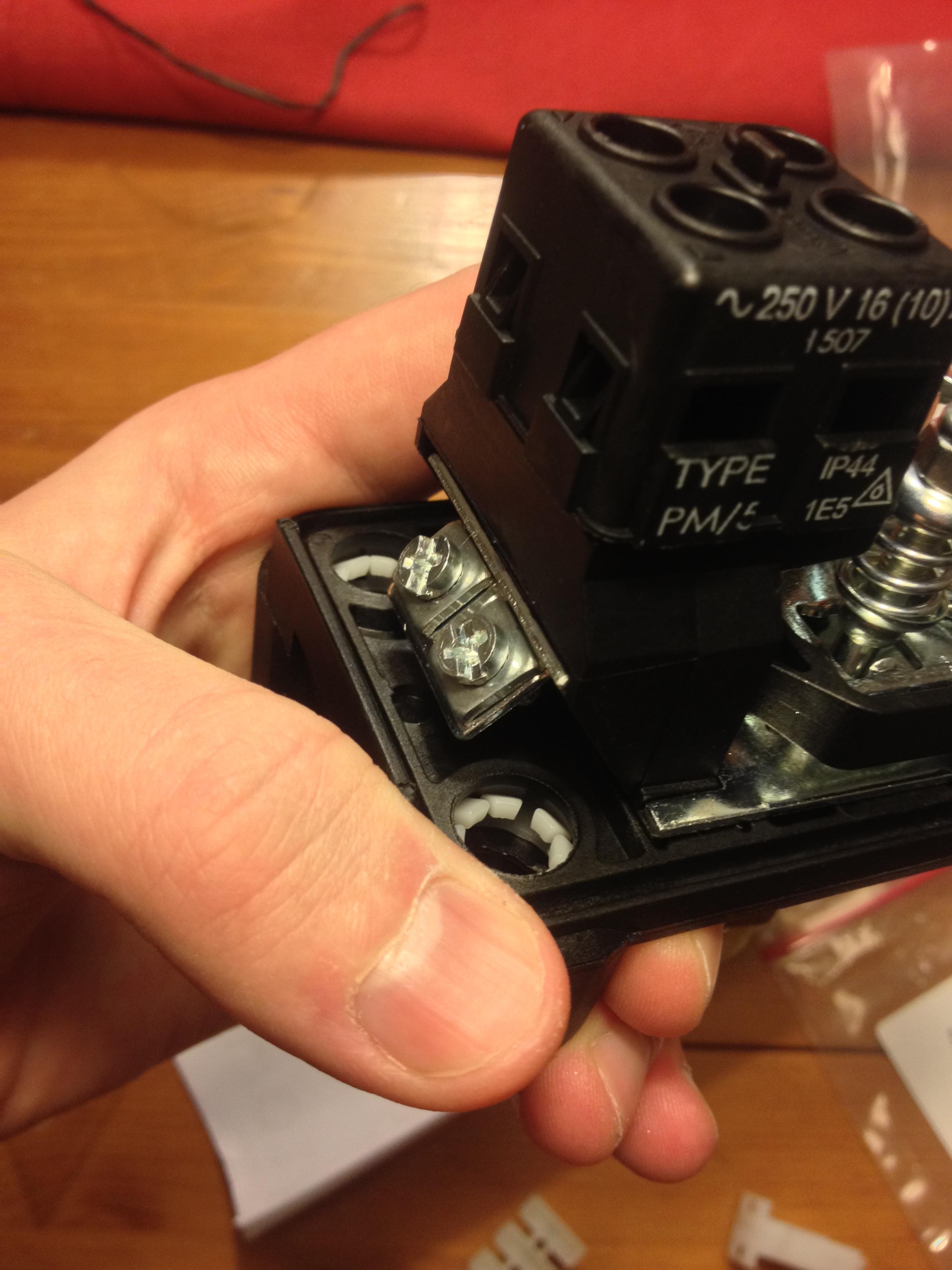I'd like to connect following components:
- From the wall socket
- .. to a cable
- .. to a pressure switch
- .. to a transformer
- Use the outer wires on the transformer to get 24V (2x12V) to the pump
Question is, how? I've no idea how to actually connect these components. I'm a complete and utter noob and I've no experience whatsoever with these things.
I've made a picture of the components.
First off, the cable is unearthed (should it be?) but there are only two connects (in/out) to the pressure switch, where should the earthed wire go?
Two wires to the in/out on the pressure switch to the transformer - does it matter which one?
From the transformer to the pump, should I put those blue wires together in the same place? Does it matter which ones I connect to what on the pump (+ / -).
I'd appreciate some help!
P.S I dont want to get fried.
Edit: I need 10 reps to post more than 2 links. Link to the transformer: http://www.electrokit.com/en/transformer-48va-2x12v-2a.45714
Edit: Info on the pressure switch








